From what I can see, you have not 2 but 3 tables: source (left half of df2), destination (df1) and mapping (right half of df2). Let's create them:
index=['ABC1','ABC2']
columns1 = range(1, 13)
columns2 = [f'Q{i}' for i in range(1,7)]
data = [
[10000,5000,'cat','doc','fish',''],
['foo',25000,'bar',60000,'moo','']
]
mapping = [
[8,9,10,11,12,pd.NA],
[1,2,3,4,5,6]
]
destination = pd.DataFrame(pd.NA, index, columns1)
source = pd.DataFrame(data, index, columns2)
mapping = pd.DataFrame(mapping, index, columns2)
In general, iteration might be the answer:
for i, c in mapping.stack().index:
if pd.notna(mapping.loc[i,c]):
destination.loc[i, mapping.loc[i,c]] = source.loc[i, c]
In case if mapping has no nan values, we could use numpy.put_along_axis. But before that, destination indices stored in mapping should be transformed to numpy indices. In this case, the indices should only be subtracted by 1. Also, I replaced nan with 6 to move the space from the source upper-right corner to the 6th position in the destination table:
indices = mapping.fillna(6).to_numpy() - 1
np.put_along_axis(
destination.to_numpy(copy=False),
indices,
source,
axis=1
)
Output of print(destination):
1 2 3 4 5 6 7 8 9 10 11 12
ABC1 <NA> <NA> <NA> <NA> <NA> <NA> 10000 5000 cat doc fish
ABC2 foo 25000 bar 60000 moo <NA> <NA> <NA> <NA> <NA> <NA>
